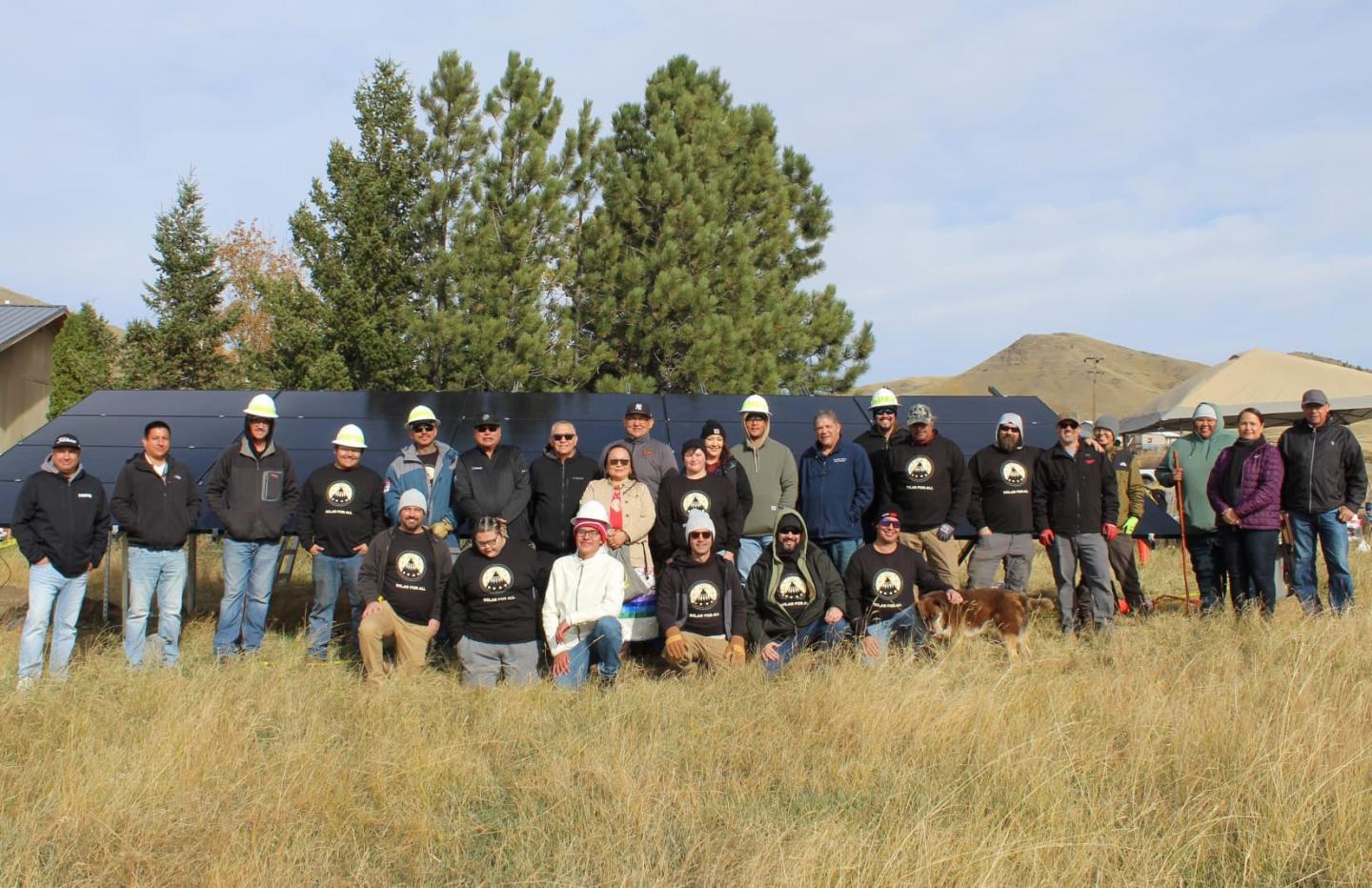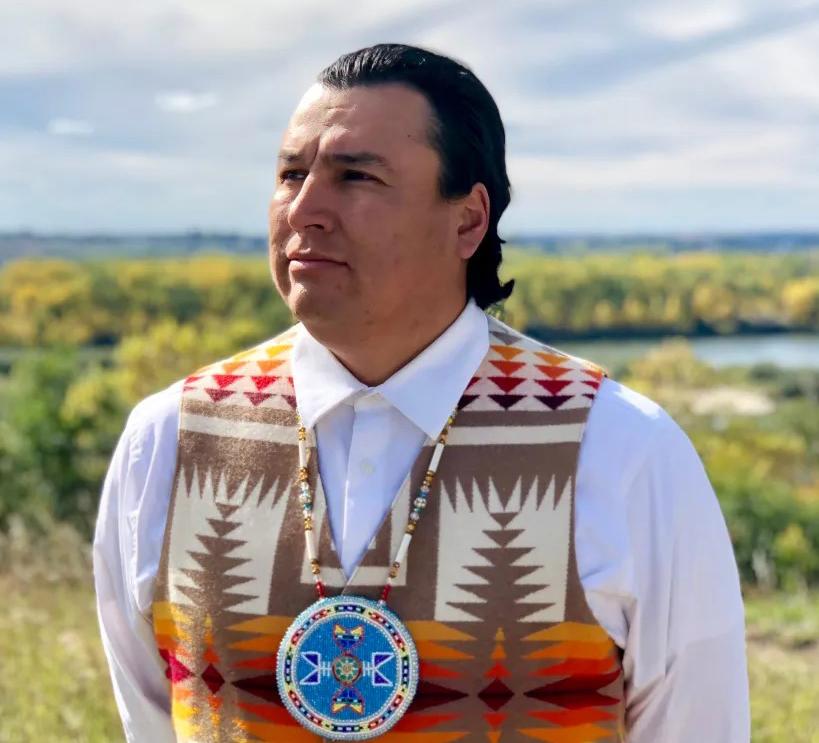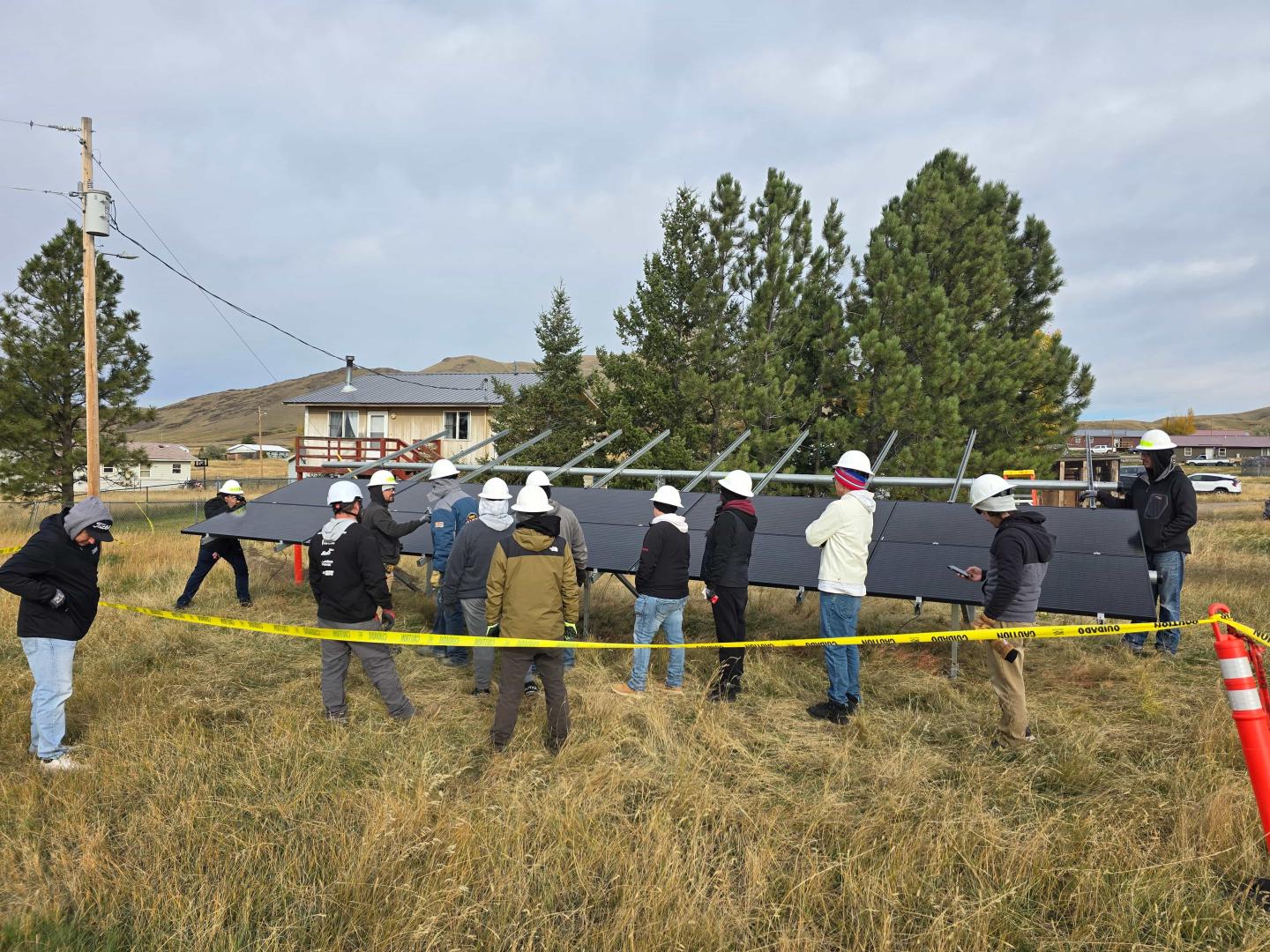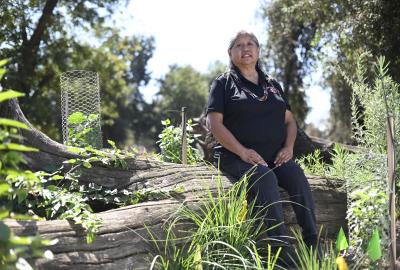Lower energy bills back in sight after solar funding released
Shovel-ready projects to install solar, create jobs and reduce electricity costs are moving forward.
It was 20 degrees out in Montana in October. But that didn’t stop building contractor Zane Patacsil from donning his hard hat and joining a dozen other members of the Chippewa Cree Tribe at an outdoor training for aspiring solar installers, held on the Rocky Boy Indian Reservation.
“I’m really into being self-sufficient versus being dependent on these electric companies that keep charging rates that are never going down,” he says.

Patacsil was hoping to hire 10-20 people to help install solar power on 200 reservation homes over the next four years, as part of an effort funded by the federal Solar for All program. Created by Congress in 2022, it’s designed to save almost a million low-income Americans all across the country at least 20% on their electricity bills — $8 billion in all — and create hundreds of thousands of new jobs.
But then, almost immediately after the Inauguration, the Trump administration blocked the program’s funding. A weeks-long roller coaster ride of chaotic reversals, legal action and members of Congress facing angry constituents at town halls ensued. The U.S. Environmental Protection Agency, which administers SfA funding, then quietly released the grantees’ funds on February 20.
“It was truly encouraging to hear this news,” said Joseph Eagleman, Sr., CEO of the Chippewa Cree Energy Corporation, which manages the tribe’s energy needs, after learning the federal funding portal had reopened. “It reinforces my optimism that our initiatives aimed at supporting our communities can progress.”
Chaotic and illegal
Solar for All funding is what government officials call “obligated.” Not only had Congress set aside the money, but contracts with the 60 state agencies and nonprofit groups that would administer the grants locally were signed last summer. In that way, SfA was like many federally funded programs, left high and dry by Trump administration actions.
Grantees like the Tribal Renewable Energy Coalition, whose $135.5 million SfA grant was meant to cover the Rocky Boy installations and those at other reservations in the Northern Plains, were already enrolling participants and offering trainings to aspiring solar installers.

For T-REC, the grant wasn’t just about reduced energy bills, clean air and jobs. It represented a move toward sovereignty over tribes’ energy resources — the first step in “a historic effort poised to reshape the energy landscape for Native communities across the Northern Plains,” says Cody Two Bears, a T-REC leader.
Without the money Congress set aside for them, T-REC and other grantees weren't sure how to pay their staffs and suppliers for projects that would soon be ready to roll out.
The Trump administration’s first attempt to block the program’s funding was overturned by the courts. In response, the EPA announced it would need to re-review all 60 SfA grants awarded last year. This despite the fact that “all of the award agreements were signed after an incredibly robust, two-year implementation process,” says Zealan Hoover, who, until January, led the EPA’s implementation of Inflation Reduction Act-funded programs.
“It was like we were holding our breath, trying not to be too pessimistic,” Eagleman says.
Environmental news that matters, straight to your inbox
New jobs and $8 billion in savings
For a president who promised “to get your energy bill within 12 months down 50%,” Solar for All seems like an odd initiative to stymie. EPA estimates show the program can save the average participating low-income household $400 a year on its electric bills. Cumulatively, that’s more than $8 billion in total savings over the next 25 years. The program more than pays for itself.
And its benefits will extend not just to participants but nationwide. The program will cut power plant pollution, reducing the greenhouse gas buildup that is heating up the planet and driving more extreme weather events, such as wetter, more intense storms and hot, dry conditions that fuel wildfires.

Solar power also helps lower everyone’s electricity prices. That’s because the cost of building new power plants is typically passed on to utility customers, and large-scale solar power projects are now less expensive to build than new gas- and coal-fired power plants in most parts of the country. Also, because solar produces the most power on hot summer days, it reduces the need for utilities to bring their most expensive and polluting power plants online to meet the demand for cooling.
Solar likewise cuts the health expenses borne by families exposed to air pollution from power plants. That pollution can exacerbate and even cause asthma, heart disease, stroke and other diseases. These days, when a single asthma inhaler can cost more than $300, those costs can add up.
“The hidden price from fossil-fuel air pollution shows up in our lungs, our hearts and our healthcare system,” says Ananya Roy, a senior health scientist at Environmental Defense Fund. “Solar power isn’t just about energy independence — it's preventative medicine on a national scale.”
Out on the Rocky Boy Reservation, where temperatures hover around -15 degrees in February and household electric bills can easily top $800 a month, the Solar for All funding restoration is nothing but good news. “There’s a lot of people who may not have electricity just due to not being able to afford it,” Eagleman says. Solar for All is designed to help change all that.
Patacsil, for his part, is now hoping to hire three or four crews to help with solar and battery installations, not just in Rocky Boy but at other reservations as well. He and others are once again thinking about the promise of the program, not the rollercoaster ride they were forced to endure.
Says Eagleman, “This represents a significant advancement in our efforts to enhance energy awareness and lower our overall energy expenses.”


